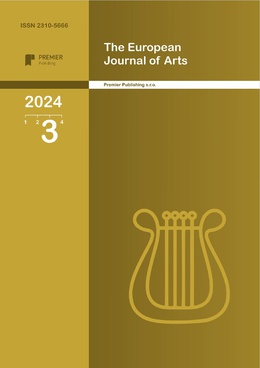ARTISTIC AND PLASTIC EXPERIMENTS IN THE WORK OF NADEZHDA KASHINA IN THE 1950S AND 1960S
Authors
Kultashev Bahrom Telmanovich

Share
Annotation
The second half of the 1950s and 1960s in the history of art in Uzbekistan became a period of revision of the previous concepts of artists, the introduction of innovations in artistic charters, which brought under a strictly defined uniform standard in Soviet art. The work of N.Kashina, who conducted various pictorial, plastic and technical experiments during this period, is a little-studied phenomenon in art criticism. The analysis of the creative development of stylistic innovations in Western art substantiates the desire of artists for a deeply individual interpretation of traditional themes – man and society, social change, everyday life. The interpretation of new ideas required a special methodological system, which led to the formation of new plastic trends as a result of the revision of existing trends.
Purpose: The article analyzes the little-studied side of N.Kashina's work in the period of the 1950s and 1960s.
Methods: The methodological basis of the research is the principles of historical authenticity, continuity and scientific objectivity of modern science; analytical, contextual, comparative typological and genre approaches of modern art studies.
Results: On the basis of a comprehensive analysis of Nadezhda Kashina's works, unknown to the scientific community, stored in museum collections, her return to the previous pictorial-plastic method, as well as an experimental method on technology, since the time of the “thaw”, was justified. Thanks to the application of the principles of decorativism, the artist manages to change the nature of the genre painting on a conceptual basis. Her creative experiments are also transferred to the studies of levkas, glass and graphics.
Scientific novelty: based on the study of N.Kashina's work, it was proved that during the period of de-Stalinization in the painting of Uzbekistan, the trend of pictorial and plastic searches in the works of artists of the younger and older generation is actualized. This trend is justified by the example of Nadezhda Kashina's work.
Practical significance: The research materials can be used in the preparation of museum and exhibition projects, in cataloguing the works of N.Kashina.
Keywords
Authors
Kultashev Bahrom Telmanovich

Share
References:
Babanazarova M. (2011), Igor Savitsky. Artist, collector, founder of the museum. “Silk road publishing house”. London. – p.
Rakitin V. Lessons from an art school. Painting of Uzbekistan // “Art”, 1970, No. 17. – pp. 32-38.
Akhmedova N. (2004). Painting of Central Asia of the XX century: traditions, originality, dialogue. Tashkent, p. 224.
Taktash R. Kh. (1982), N.V. Kashina. 1896-1977: Life and work. Tashkent, p. 136
Kultashev, B. Sadikova, S., & Kultasheva, N. (2021). Development of Portrait of Uzbekistan during the Early 20th Century. The Journal of Contemporary Issues in Business and Government, 27(2), 2040–2053. Retrieved from https://cibgp.com/au/index.php/1323-6903/article/view/1111
Kultasheva N. (2019). Some aspekts of portrait genre of Uzbekistan early XX century - Culture and Arts of Central Asia


